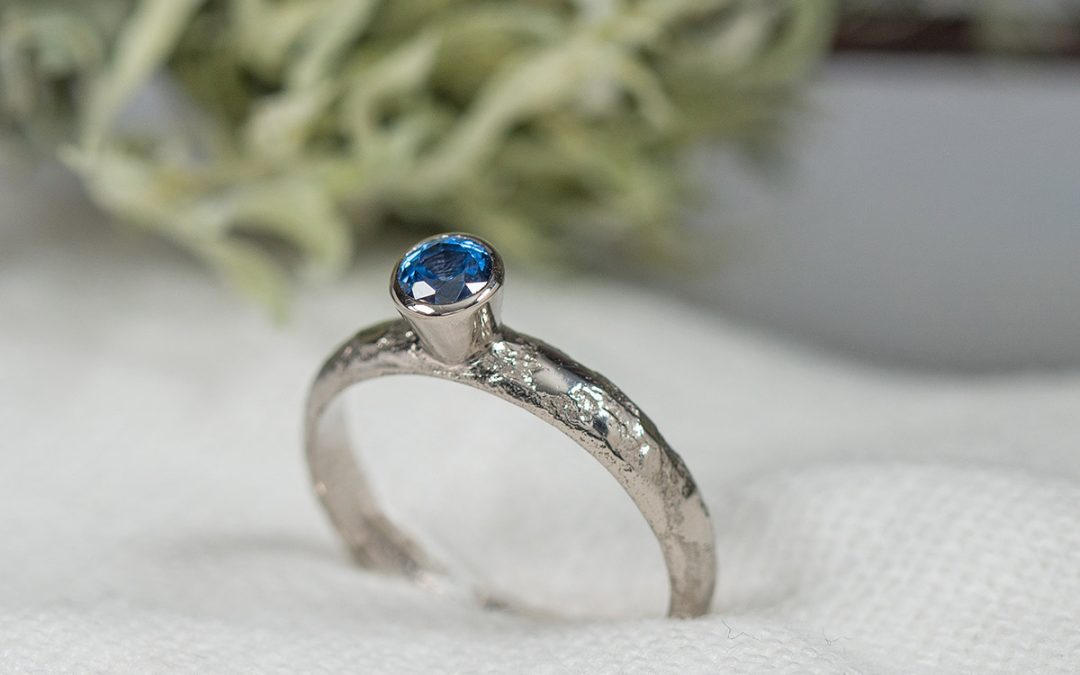Whatever anyone tells you, there are no rules when it comes to proposing, or choosing an engagement ring.
It doesn’t have to be a diamond (unless you want it to be) and you don’t have to spend 3 months salary either – that’s just a load of marketing malarkey.
There are some bits of info though that might help and guide you to choose the perfect ring for your significant other.
So, first up, is this going to be a complete surprise, or do they know it’s coming and they’ve been dropping hints for eons? If they know a ring is on it’s way, consider including them in the purchase of the ring, that way they can have some input into the design and it makes things like sizing much easier. If you’re going bespoke, it’s also a really lovely experience to have together.
Style
No doubt you’ll have a good idea of their style and what sort of thing they’ll be drawn to. Are they quite traditional, or do they like something more unusual, minimal or blingy, dainty or showstopper? What colours do they wear? Are they drawn to geometric designs or nature inspired pieces? Not sure? Have a think about the jewellery you see them wearing a lot and take note.
Next choice diamonds or coloured stones, or a mixture of both?
If you’re buying diamonds, make sure that they are traceable to the mine of origin, a Kimberly Process Certificate that guarantees diamonds are conflict free, is really not worth the paper it’s written on. You can find out more about the situation here
Sustainability & Environment
Diamonds are in my opinion a bit tricky, at least from an environmental point of view. Diamond mines tend to be huge, so that’s a massive hole in the ground, even with the best of intentions it damages ecosystems and the amount of CO2 produced to dig it up is massive. Other options for diamonds are antique (sourced to order), laboratory created (less CO2), and recycled. Recycled and antique diamonds aren’t traceable though obviously.
Colour
Diamonds come in a multitude of different colours, various shades of white, champagne through cognac to brown and black, you get yellows, blues and green. Blues and green are very rare and VERY expensive. These colours are available in laboratory and natural diamonds. You also get what are known as salt and pepper diamonds, these are diamonds with inclusions (to a greater or lesser extent), but many people like them for their natural look and unique appearance. Diamonds are colour graded D-Z based on the absence of colour, D is colourless (white), Z is yellow.
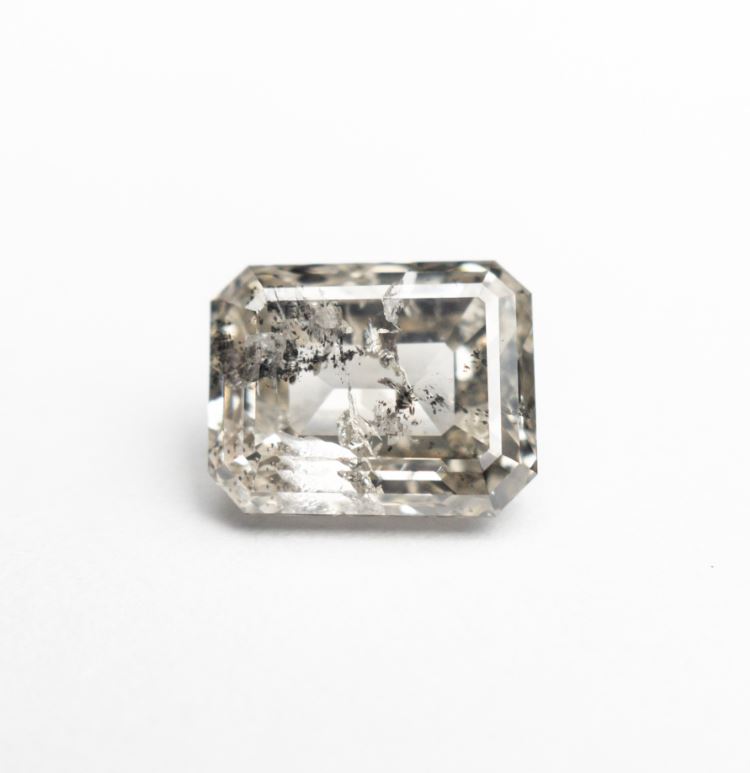
Emerald Cut Salt and Pepper Diamond
Clarity
Talking of inclusions, these are what we are looking at when we talk about Clarity, one of the four C’s (Carat, Clarity, Colour and Cut). Pretty much all diamonds have some inclusions, you do get flawless diamonds but they are very rare. Larger diamonds tend to come with a certificate which will tell you about the Carat, Clarity, Colour and Cut of a diamond. The presence or absence of inclusions is characterised as Flawless, Internally Flawless, Very Very Slightly Included (VVS1 and VVS2), Very Slightly Included (VS1 and VS2), Slightly Included (S1 and S2) and finally Includes (I1, I2 and I3). G is a very good white, without being so rare that it is out of most people’s budgets.
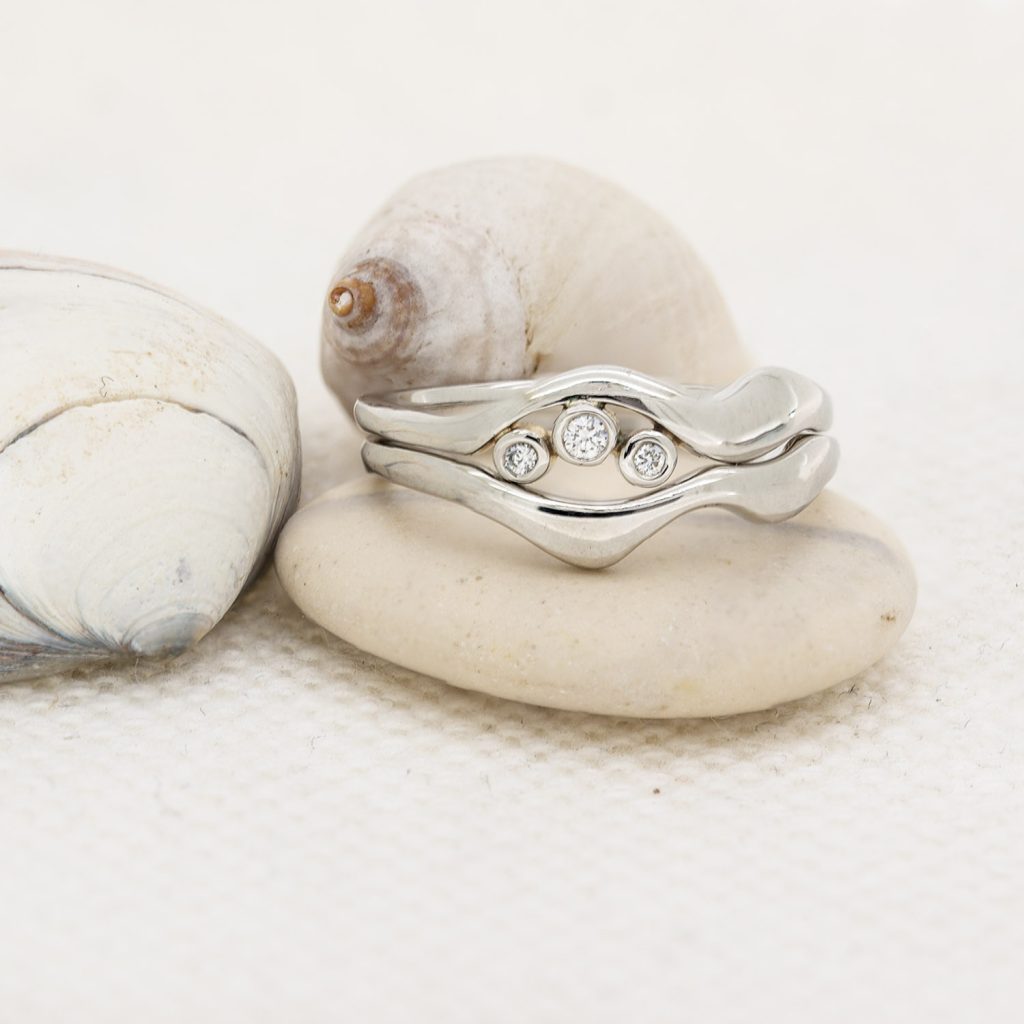
Colour G, Clarity Vs, Diamonds in this Tideline Engagement Ring
Cut
In terms of Cut, a better cut will result in a more sparkly diamond, the facets will be more symmetrical, have a better polish and will better reflect the light. Diamonds are most often shaped as rounds and ovals, an oval of the same carat weight will tend to look bigger than a round due to the way it’s cut. Other shapes to consider are pears, baguettes, cushion cuts, princess (square), ascher, emerald and marquis. The more unusual a cut, the more expensive it’s likely to be and the availability of different shapes is likely to depend on the size of diamond you choose. Rounds are by far the most available, especially in sizes under a carat.


Carat
What is a carat I hear you ask? A carat is just a way of measuring the weight of diamonds. One carat equals 200mg, it’s divided into 100 points, so a 0.25carat diamond is 25 points. The bigger a diamond is, the rarer they become and therefore the price increases the greater in size they are. To give you a rough idea, a 0.25ct round diamond will measure approx 4mm in diameter, a 0.5mm round diamond is around about 5mm in diameter, a 0.70ct round diamond is about 5.75mm in diameter and a 1ct round diamond is about 6.5mm in diameter.
A 0.5ct pear shape is about 6x4mm, a 0.5ct princess is about 4.4 x 4.4mm, a 0.5ct marquis will measure around 8 x 4mm, so you can see how the shape can change how big a diamond appears. This is the same with coloured gemstones.
Coloured Gemstones – Hardness
The Moh’s scale is a way of measuring the hardness of gems and by hardness, I mean resistance to scratching. Diamond is a 10, talc is 1. Sapphires and Rubies sit at 9, Topaz and Spinel at 8, Emerald and Aquamarine at 7.5 – 8 (but note that whilst emeralds are pretty resistant to scratching, they are brittle and crack easily), with gemstones such as quartz, tourmalines, citrines, tanzanite and agates coming in between 6.5 and 7.5.
I tend to recommend for an engagement ring that you go for a diamond, ruby or sapphire. They are the most robust for daily wear. My own favourites are sapphires, they come in a huge range of colours and cuts, the ones I supply are traceable and responsibly sourced, often coming from artisanal and small scale mines. They come in a myriad of shapes and sizes, including fancy and custom cuts.
Coloured Gemstone Inclusions
Gemstone inclusions aren’t viewed in quite the same way as those in diamonds. Many inclusions add to the stone’s effects such as “silk” and the cat’s eye effect seen in sapphires. Coloured gemstones can be stunningly beautiful with many combinations of colour.

A Blue Sri Lankan Sapphire, In a Rubover Setting
Height of the stone
When choosing a coloured gemstone (or a diamond), it’s also worth thinking about how proud you want the ring to sit on the finger. The depth of the stone (in a faceted cut) will increase with size, so it will sit higher the bigger it is. An alternative to this is a rose cut or a cabochon cut. Rose cuts are flat on the bottom, faceted on top, cabochons are flat on the bottom, curved on top and can therefore sit much lower on the finger.
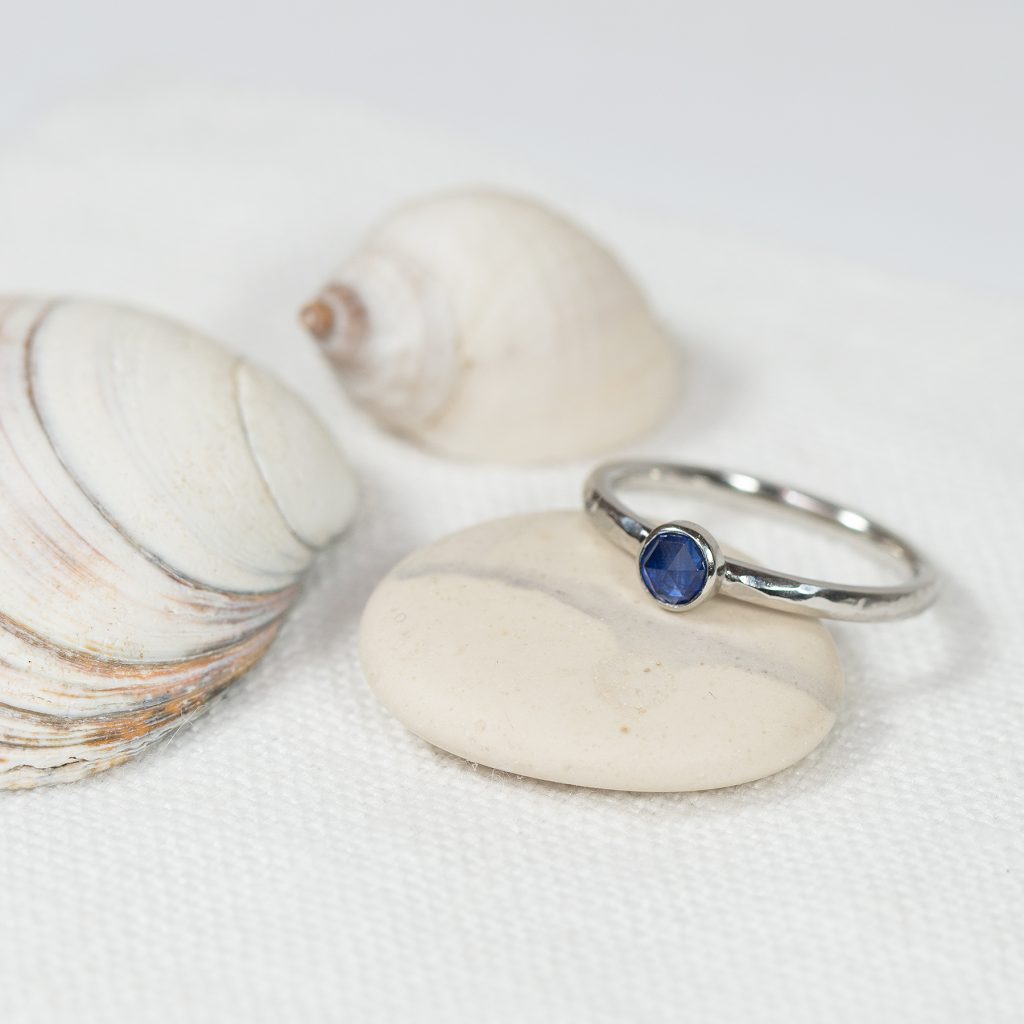
Rose Cut Sapphire Engagement Ring
Type of Setting
The choice of type of setting (the metal that holds the stone in place) is down to a combination of style and practicality. The setting’s job is literally to hold the stone securely but to also show the stone off to best effect. Some people feel claw settings let in the most light, others find them likely to catch on things. Rubover settings enclose the stone in a ribbon of metal, they are minimal, unfussy and don’t catch, they’re also very secure. A partial rubover setting like those on this ring, can be a good middle ground. Small stones (up to 3mm) can also be bead set, often seen as a halo on the top of a ring or on the shoulders.
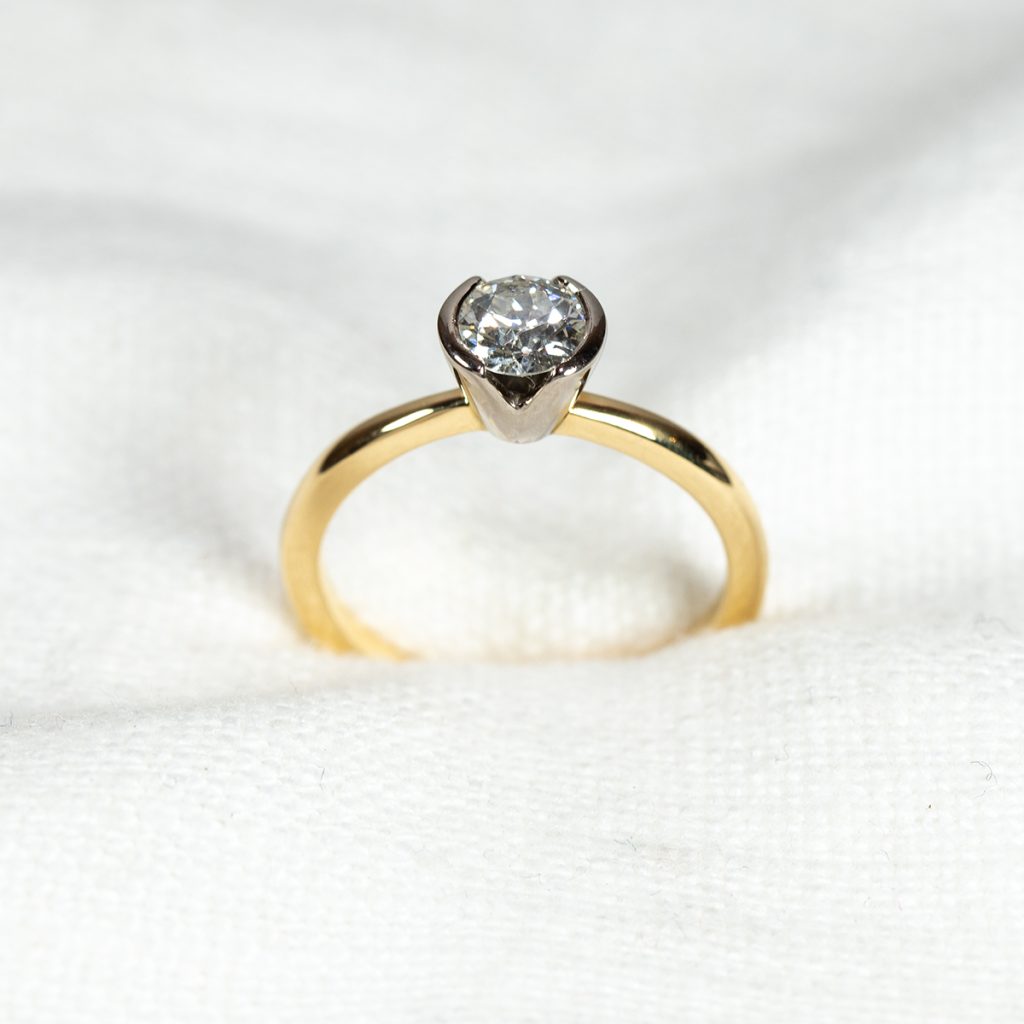
Partial Rubover Setting
Precious Metal Choice
So this partly about longevity and design, and partly to do with preference. Start with “what colour do I want the ring to be”, yellow, white or rose? Then think about the metal choices: 9ct gold, 18ct gold, platinum. Silver is too soft to last with every day wear, so an engagement ring should be made in gold or platinum. If budget allows, most people will go for 18ct gold or platinum but 9ct is an option too. Size for size, platinum will feel heavier on your finger than gold, but it can be handy to use where you want fine prongs as it is very strong. 18ct gold is a good all round option. Contrary to popular belief, platinum will scratch – as will any metal. I offer my customers the choice of recycled gold and platinum, or either Fairmined or Fairtrade Gold. Recycled metal has benefits in terms of reduced CO2, Fair Trade and Fairmined metals support artisanal and small scale miners and are traceable to the mine of origin, which is important if, for instance you want to be sure there isn’t child labour involved or that the gold isn’t helping finance war. My other blog posts go into more detail.
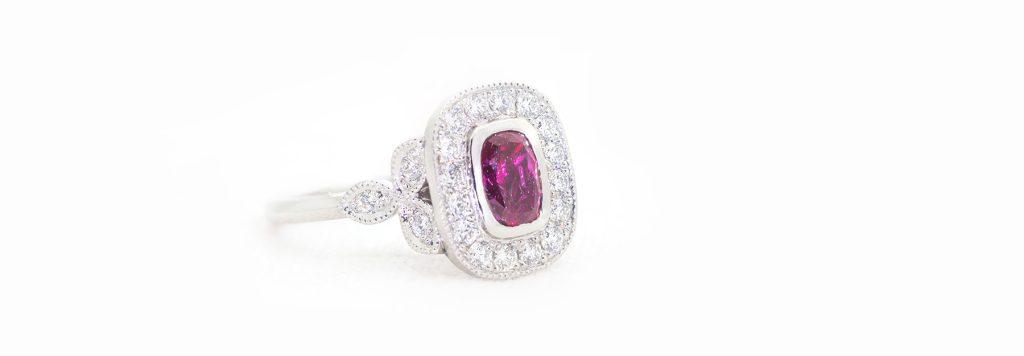
A Cushion Cut Ruby, Set Within a Halo of Bead Set GVs Diamonds
Engagement Ring Sizing
Ideally you want to get the size right first time if possibly, but I do include a free resize on most of my engagement rings. Rings that have stones flush set into the band are pretty much impossible to resize, so do bear that in mind. There are ways to approximate a ring size, so for instance if you’re right handed, the same finger on your left hand is usually a size smaller. The ring finger on your left hand, is usually a size smaller than the middle finger on your left hand, so if you can get provide a size for a different finger (or the ring that fits it) it is possible to estimate it.
Bespoke, Custom or Ready to Wear
Finally, do you want to create an entirely bespoke piece of jewellery based on your story, or customise a piece from my engagement ring collection, using it as the basis for a bespoke piece or having a different shape of stone? Or maybe you’ve connected with one of the original rings and it’s perfect as it is? You can view my engagement ring collection here and find out more about bespoke and custom engagement rings here.
I hope that helps, get in touch if you’ve any questions or would like to make an appointment to look at some engagement rings.
Lisa

